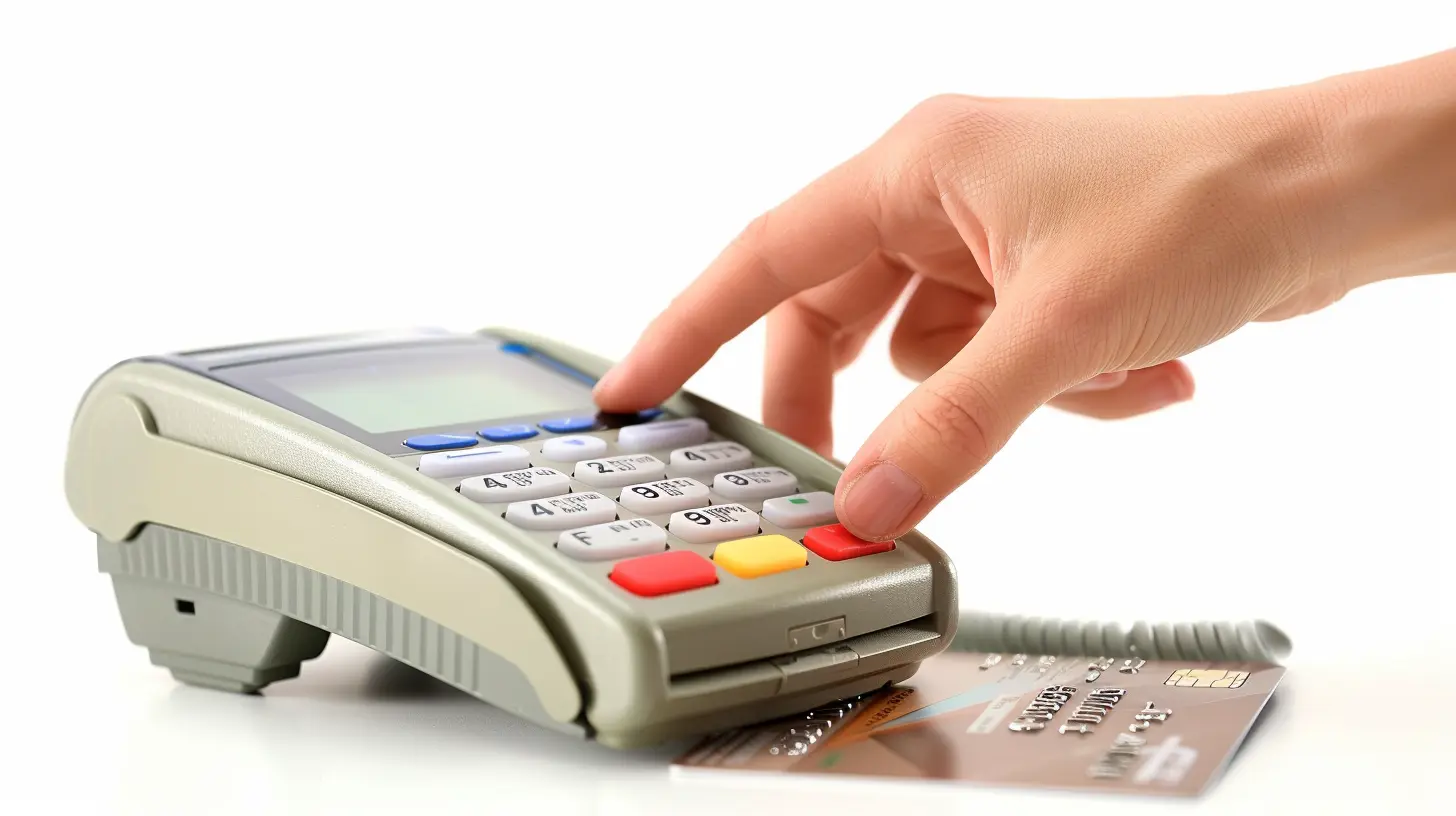The Future of Mobile Payments: What You Need to Know
24 July 2025
Mobile payments have come a long way in just a few short years. Remember the days when paying with your phone felt like a sci-fi fantasy? Fast forward to today — buying a coffee, paying for groceries, or splitting dinner with friends can all happen with a few taps on your smartphone. But hang on, this is just the beginning.
The future of mobile payments is being shaped by rapid tech innovation, evolving consumer habits, and a major shift in how we think about money. Want to stay ahead of the curve? Let’s take a deep dive into what lies ahead and what it means for you.

Table of Contents
1. What Are Mobile Payments?2. Why Mobile Payments Are Skyrocketing
3. Digital Wallets: The New Normal
4. The Role of Biometric Security
5. How AI and Machine Learning Are Enhancing Mobile Payments
6. Cryptocurrencies and Blockchain: Game-Changers in the Making
7. Wearables Will Make Paying Even Easier
8. The Rise of Contactless Everything
9. Mobile Payments in Emerging Markets
10. Challenges Ahead: What Could Slow It Down?
11. The Road Ahead: What You Can Expect

What Are Mobile Payments?
Let’s be real — the whole “mobile payment” thing sounds more complicated than it actually is. In simple terms, mobile payments are transactions made using your smartphone or another wireless device. That can be anything from Apple Pay and Google Pay to scanning a QR code or using a payment app like Venmo.Instead of carrying cash or cards, your phone becomes your entire wallet — more secure, more convenient, and often faster.

Why Mobile Payments Are Skyrocketing
So why is everyone ditching their wallets?First off, convenience is king. No more fumbling for exact change or waiting in line at the ATM. Everything’s right there on your phone. Mix that with the global pandemic (which made contactless payments the safer choice), and you’ve got a massive surge in adoption.
And let’s not forget — younger generations live on their smartphones. For Gen Z and Millennials, mobile payments aren’t just a novelty; they’re a lifestyle.
Here’s the kicker — according to recent studies, the global mobile payment market is projected to surpass a whopping $12 trillion by 2027. Yep, trillion with a ‘T’.
Digital Wallets: The New Normal
If you’re not using a digital wallet yet, chances are high you will soon.Think of a digital wallet as your physical wallet… but on steroids. It holds your credit cards, debit cards, ID, boarding passes, loyalty cards, and more — all in one secure place. Apple Pay, Samsung Wallet, and Google Pay are leading the pack, but new players are popping up everywhere.
What actually makes digital wallets so powerful is their ability to securely store your data and support instant payments — sometimes even without a network connection. Plus, many wallets now integrate with apps, letting you pay bills, buy tickets, or even apply for loans.
It’s not just about convenience anymore — it’s about doing everything faster, easier, and smarter.
The Role of Biometric Security
Security is a huge concern when it comes to finances. Luckily, mobile payments are getting a serious upgrade with biometrics.Let’s break it down.
🔒 Fingerprint scans
🔒 Facial recognition
🔒 Voice authentication
🔒 Even iris scans in some super high-tech scenarios
Biometric authentication adds a powerful layer of protection. Unlike passwords, your biometric data is unique to you. This makes it incredibly hard for hackers to break in. Plus, it’s fast — no more typing in long PINs or passwords.
In the future, expect biometric verification to become the standard, not the exception.
How AI and Machine Learning Are Enhancing Mobile Payments
Imagine your payment app knowing you so well it can detect fraud before you even blink. That’s not science fiction — that’s artificial intelligence in action.AI and machine learning analyze patterns in your spending habits. If something looks fishy (like a purchase in a country you’ve never visited), the system can alert you instantly or even block the transaction.
But it doesn’t stop there. AI also powers smart spending tools — like giving you insights on where your money is going or recommending better ways to save. It’s like having a finance-savvy assistant living in your phone.
Cryptocurrencies and Blockchain: Game-Changers in the Making
Let’s talk crypto. Whether you love it or hate it, one thing’s clear — cryptocurrencies and blockchain tech are disrupting mobile payments in big ways.Apps like Coinbase, Binance, and even PayPal now let you buy stuff directly with Bitcoin, Ethereum, or stablecoins. And with decentralized finance (DeFi) platforms gaining popularity, the idea of a bankless financial system is becoming less far-fetched.
Blockchain also boosts security and transparency by creating a permanent, unalterable record of transactions. That’s huge in reducing fraud and building trust.
In the coming years, expect to see more crypto integrations into everyday mobile wallets, especially with the rise of Central Bank Digital Currencies (CBDCs).
Wearables Will Make Paying Even Easier
Phones are just the beginning.Wearable tech like smartwatches and fitness trackers are turning into mini payment hubs. Imagine going for a jog and picking up a smoothie without ever touching your wallet or phone — just tap your watch and boom, paid.
Apple Watch, Fitbit Pay, and Garmin Pay already offer this functionality, and more brands are jumping on board. As wearables become more powerful and stylish, paying with your wrist might become as second nature as checking the time.
The Rise of Contactless Everything
Contactless isn’t a trend — it’s a movement. And mobile payments are leading the charge.With NFC (Near-Field Communication) technology, payments happen in a flash. Just tap your phone or wearable near a terminal, and you’re done in seconds. No swiping. No inserting. No signing stuff.
This isn’t just great for convenience – it’s also safer. With less physical contact, you reduce the spread of germs. (Thanks, pandemic, for speeding that up.)
Businesses are catching on too, from small coffee shops to massive retail chains. The more contactless you go, the more frictionless the experience.
Mobile Payments in Emerging Markets
Here’s something many people overlook — mobile payments are absolutely exploding in developing countries.Why? Because in places where traditional banking systems are weak or non-existent, mobile money becomes the backbone of the economy. Think of M-Pesa in Kenya or Paytm in India. These platforms are empowering millions by offering financial services via basic smartphones.
As internet access extends further, and mobile devices become cheaper, expect mobile payments to dominate even more in emerging economies. It’s not just tech evolution — it’s financial inclusion on a global scale.
Challenges Ahead: What Could Slow It Down?
Now let’s keep it real for a sec — mobile payments aren’t without their headaches.👎 Security Concerns: Even with biometrics and encryption, cyberattacks are a threat. One major data breach could shake consumer confidence.
👎 Privacy Issues: Apps track tons of your data. Who owns it? How is it used? These are growing concerns.
👎 Infrastructure Gaps: In some areas, poor internet or outdated payment terminals can make mobile transactions a nightmare.
👎 Digital Divide: Not everyone owns a smartphone or feels comfortable using mobile apps, especially older generations.
So while the future is bright, the path isn’t totally smooth. Overcoming these roadblocks will be key to unlocking the full potential of mobile payments.
The Road Ahead: What You Can Expect
Alright, let’s zoom out and look at the big picture.Mobile payments are evolving from a convenience to a necessity. The world is moving toward a cashless, cardless, even phoneless future (thanks to wearables and embedded tech).
So what should you do?
✅ Start using mobile payments if you haven’t already.
✅ Stay informed about changing tech trends.
✅ Be cautious about security and privacy.
✅ Watch how emerging technologies like crypto and AI shape your finances.
Because at the end of the day, the future of mobile payments isn’t some far-off dream — it’s happening right now, right in your pocket.
Final Thoughts
Whether you're a tech geek, a casual spender, or someone who just hates carrying a bulky wallet, mobile payments are changing how we interact with money. It’s faster. It’s smarter. It’s even kinda fun.But it's also evolving fast — and staying on top of trends now will save you from playing catch-up later.
So, are you ready to tap into the future?
all images in this post were generated using AI tools
Category:
Mobile DevicesAuthor:

Kira Sanders
Discussion
rate this article
2 comments
Kara Barnes
Great insights! The evolution of mobile payments promises convenience and security. Embracing emerging technologies like blockchain and biometric authentication will be crucial for both consumers and businesses moving forward.
November 4, 2025 at 7:39 PM
Vincent Becker
Mobile payments are transforming transactions—embracing security, convenience, and innovation is key for businesses and consumers. Stay informed and adaptable!
July 29, 2025 at 4:16 AM

Kira Sanders
Thank you for highlighting the importance of security and adaptability in mobile payments! Staying informed is crucial for navigating this evolving landscape.

